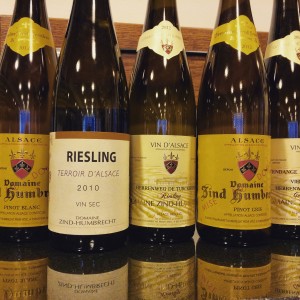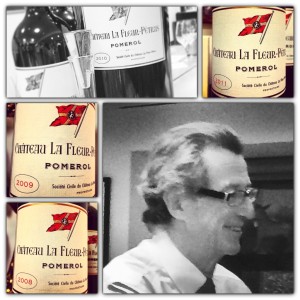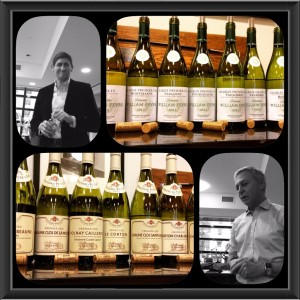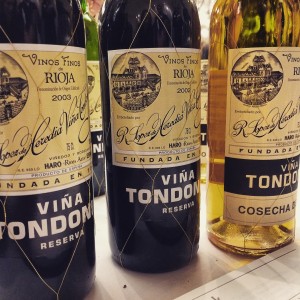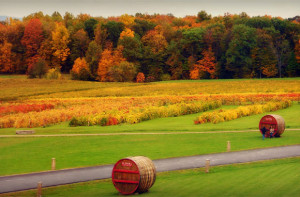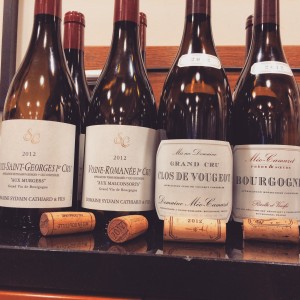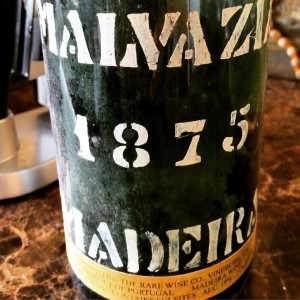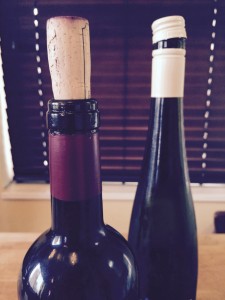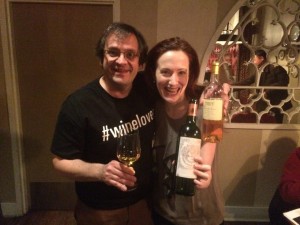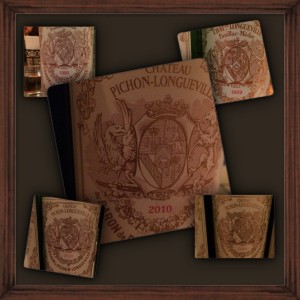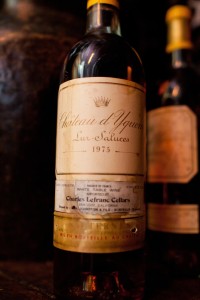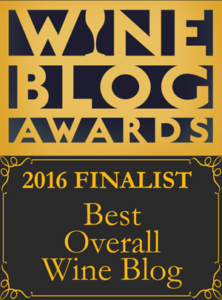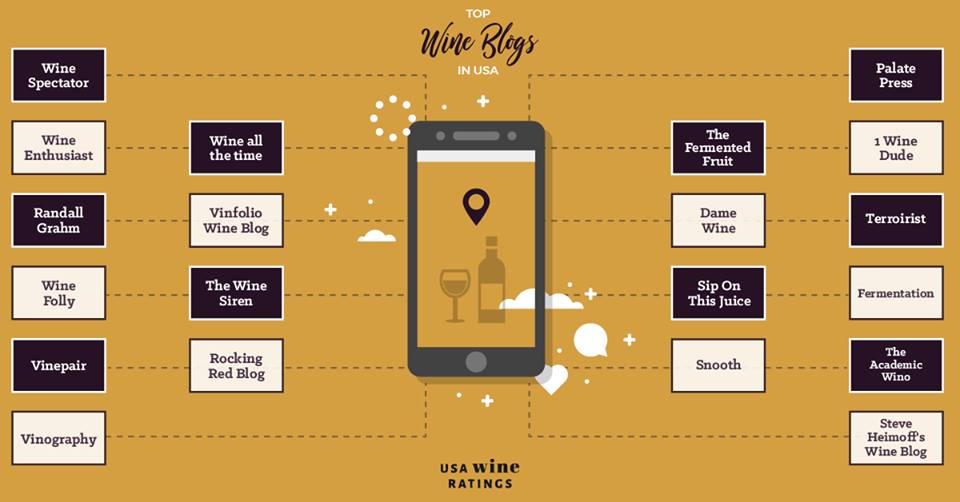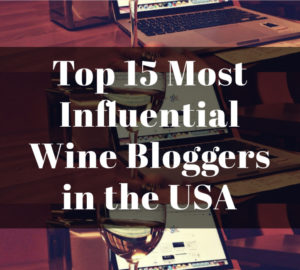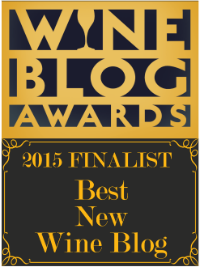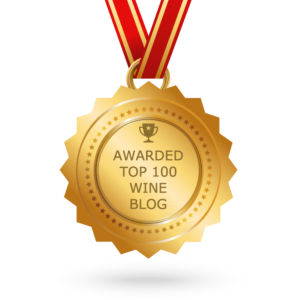A few months ago, I went to a wine trade tasting that featured Olivier Humbrecht, and I haven’t had the chance to write about that incredible experience on my blog. (Those of you who follow my blog regularly know that I was overwhelmed with the Masters of Wine exam, and I was only posting on a monthly basis during that time.) Anyways, I am still thinking about that great experience and I cannot help thinking of one thing:
Why is Alsace promoting their dry wines during a time when wines with sweetness are becoming a big trend?
Many of us know the issues that Alsace wines have had with creating a strong brand for themselves. Even though many may argue that quite a few traditional European regions have an old dusty image that are trying to change to become exciting to younger consumers, I think Alsace has one of the biggest hurdles.
Alsace is not obscure enough where many wine consumers will get a thrill from discovering something that is rare. It does not have the worldwide association with higher quality wines as Burgundy and Bordeaux. A poor quality Bourgogne will always be able to sell large quantities in major cities around the world at a higher than deserved price point. In New York City, wine consumers that are looking to buy a European wine around USD $12 can easily be talked into buying a Burgundy wine around USD $20. And the reason is simply the fact that if it’s from Burgundy then it has to be good. And I say this as someone whose favorite wine region is Burgundy.
What about Alsace?
Even among many wine enthusiasts I have met, there is still the misperception that Alsace wines are only sweet wines, and nothing more. By contrast, German wines, which were also once seen as simple, sweet wines (with the help of Blue Nun), have really gained an elevated reputation with enthusiasts now associating them with high quality wines. Yes, they still suffer from the idea that it’s difficult for consumers to know the amount of residual sugar in a wine – even though knowing the alcohol level will help. But I cannot tell you how many times I have heard New York City wine consumers say that they want a Riesling wine and they want it to be German because Germany makes the best Riesling. That is pretty powerful branding in the niche wine market, because it almost seems, to a certain degree, that a consumer is open to a range of sweetness in their Riesling as long as it is German since Germany = high quality Riesling. Pretty sweet for Germany – no pun intended.
The whole sweetness issue fascinates me. Most consumers around the world like sweetness in one form or another. Sometimes this is expressed as a fruit forward quality, hence why Marlborough, New Zealand producers typically leave a few grams of sugar and cold ferment to give a perception of tropical fruit sweetness to balance the intense herbaceous notes they receive.
And when we think of wines ranging from entry level, off –dry Moscato, to chocolate-y, Rutherford, Napa wines, to off-dry to medium sweet Mosel Rieslings, to the trend of off-dry red wines, such as well-established Apothic and Ménage à Trois (and the presently extremely popular Meiomi which has the added benefit of the powerful variety brand of Pinot Noir on the label), it makes one wonder why Alsace wines are not part of the sweetness trend?
Well, not only are they not part of the sweetness trend, but they are looking to emphasize their dry wines.
Earlier this year, the Association des Viticulteurs d’Alsace (AVA) voted and passed a label requirement of the word “sec” or “dry” on Alsace wines if there are 4 or less grams of residual sugar per liter, or up to 9 grams if high acidity levels give a perception of a dry palate.
Olivier Humbrecht said he thought this new law could help Alsace sales. He believes that many do not know the incredible diversity of their wines, and furthermore, that customers (buyers for restaurants and retail stores as well as wine consumers) have had bad experiences with buying a certain Alsace wine only to find out that they bought a sweet wine when they wanted to have dry, or bought a wine with fierce acidity when they wanted sweet. This actually happened to a friend of mine who does not like intense acidity and mistakenly bought a dry Trimbach Riesling. I was more than happy to take it off her hands.
Olivier also talked about his own personal mission to make his wines more transparent in their style type. Since 2001, he has placed a sweetness index on the label, typically right next to the alcohol. Indice 1 is the driest up to Indice 5 is the sweetest. He does not base these labels on residual sugar, but instead, he bases it on his own perception when he tastes the wines. He said other Alsace winemakers who use the Indice system will sometimes disagree with his classification and some may have a completely different scale of 1 to 10. Okay, this is where something that was intended to be helpful to the consumer is actually making things more difficult.
When I think back to the first time I was introduced to Barefoot Moscato and the Apothic red blend I remember that I knew the off-dry Moscato would be a hit, but even before I tried Apothic I let my snobbery get the best of me, and I thought it was a horrible idea. But I should have known that anything that Gallo thought was going to be the next big thing – was probably going to be the next big thing. And sometimes I think, do these big wine companies just know what will be the next big trend because of their incredible research? Or do they have the resources to simply create the trend? That is an interesting topic to discuss another time.
Sweetness in Wine
I have to admit when I finally had Apothic, around 4 years ago, it was tasty. No, it did not make my heart sing, but it is a tasty, easy drinking wine. At the time, I would not have guessed that there was around 16 grams per liter of residual sugar. Yes, it seemed like a fruit forward wine that was soft, with no distinctive sense of place or variety – but I would not have immediately guessed it was an off-dry wine. And it seems that many Apothic lovers do not know it is an off-dry wine – and in my experience I find they don’t want to know. So if a red blend with sweetness can sell boat loads of wine, why can’t Alsace do the same thing?!
Okay, but Apothic is a USD $9 red blend, and most wines from Alsace are white, many having a varietal dominance. Moscato would have more similarities (white wine with aromatic varieties) but again, it is an entry level priced wine with supplies that come from all over the world, hence keeping the low price points. And once you get above USD $15 wine drinkers want to know a little bit more about the wine, and keeping the sweetness an unknown fact becomes a little more difficult.
Alsace is unique in its current standing as a region in France (a long history of Germany and France fighting over territorial rights) that has had a long focus on variety as much as place. Many winemakers will say the key to a great Alsace wine is the perfect pairing of a specific variety and place (soil) – and some take it a step further as saying certain wines need to be dry, and certain wines need a particular amount of residual sugar.
That brings me to Alsace’s previous home country, Germany. Yes, Germany wants to improve exports, especially for their premium wines (over USD $20), but they certainly are doing a lot better in niche markets than Alsace. There are many reasons for this trend among high involvement consumers; some of them have to do with key influencers in the wine world successfully waving the flag for German Riesling. But even though the US wine nerds are crazy about the off-dry and medium wines of Germany, I think that the trend was in part created by the emphasis on their dry wines.
Okay, if I am losing you – just follow me with this idea.
I think consumers on the whole will accept higher priced sweet wines (averaging around 100g/l residual sugar), because traditionally sweet wines have always been more expensive due to the high cost of production. But I’m talking about wines that are below 45 g/l residual sugar. I think there is a prejudice against wines above a certain price point that are considered off-dry or medium. One of the ways that Germany was able to get around that was by promoting dry wines. The establishment of Grosses Gewächs in 2002 helped to make a clear line between wines that were dry and wines that were sweet. Of course, many will argue that it ignores all the wines in the middle of the sweetness scale.
But what I think it did was bring attention to higher quality wines that had a “dry” style, and hence, raised the overall perception of German wines that went beyond Blue Nun – especially with high involvement people in the US trade, who then hand sold it to their customers. And it seems like what has happened is that consumers have a general feeling that Germany = high quality white wines. And this has indirectly helped sales of German off-dry and medium styled Rieslings because enthusiasts are more concerned with the idea that they are drinking a wine from a good German producer rather than the amount of sugar in that wine. No, this has not happen on a mass scale, but again in niche markets in major cities around the world.
Some winemakers in Alsace are afraid that it will force them to make dry wines when that is not in the best interest of a particular site or variety, such as Marcel Deiss who produces richer styles and is an Alsace rebel with his field blends. Alternatively, some winemakers, such as Humbrecht, feel this is a positive move for the region as a whole. Winemakers such as Deiss have already an inbuilt cult who will buy their wines year in and year out, but there are many other winemakers who are struggling, and potentially their sales could decrease in this highly competitive global wine market.
I think there are hard realities all of us need to face in life. What are our strengths? What are our weaknesses? That second question is not so easy to face. There is typically a certain amount of pain and upheaval that comes with improvement. Some of us get to the point where things have to change because we have no choice – our survival depends on it, and there are some of us who are content enough in life to stay in a place that is comfortable, and hence, the various risks of change are not worth it. I think Humbrecht wants to see changes in Alsace before things get too bad – never a good thing to have to make decisions when you are desperate. Conversely, we never want to go too far where we lose our core values, the essence of who we are – and that becomes more complicated when you are dealing with a region rather than just one person.
**************************************************************
Wines I tasted on May 1st, 2015 with Olivier Humbrecht leading a trade tasting, and yes, interesting that four of them would be technically considered dry and one of them technically would be considered sweet.
All of the below wines are produced by Domaine Zind-Humbrecht and they follow the order in which they were tasted:
-2012 Pinot Blanc:
A medium body with pure notes of white peach, <2 g/l residual sugar, Indice 1 & 12.9% abv
-2010 Riesling “Terroir d’Alsace”(a blend of a few vineyards):
Juicy stone fruit, mouth watering acidity, saline minerality, intense lemon peel note, good precision but not too intense, ready to drink now, 4 g/l residual sugar, Indice 1 & 12.8% abv
-2012 Riesling “Herrenweg de Turckheim”(vines around 45 years of age):
Vineyards are around their winery and the first vineyard they harvest, always gives pretty aromatics, and their wine had beautiful white floral and limestone notes, a greater backbone of acidity and long length of flavors indicates it has a lot longer to go to reach its prime, 4.4 g/l residual sugar, Indice 1 and 12% abv
Interesting side note that all of their Grand Cru wines have a little wax disk on top of the cork to better preserve the wines for long term aging.
-2012 Pinot Gris:
My first impression was alcohol, richly textured body, smoky, a hint of brazil nut, Olivier called it a dry classic style, <2 g/l residual sugar, Indice 1 and 14% abv
-2011 Gewürztraminer “Herrenweg de Turckheim” Vendange Tardive (vines around 65 years of age):
Lychee, mango, rose petal, exotic spice, lush palate, fresh acidity not significantly defined but noticeable, this wine is all about the flavor and body of ripe fruit, 98 g/l residual sugar, no Indice needed since it is a sweet wine and 13% abv


